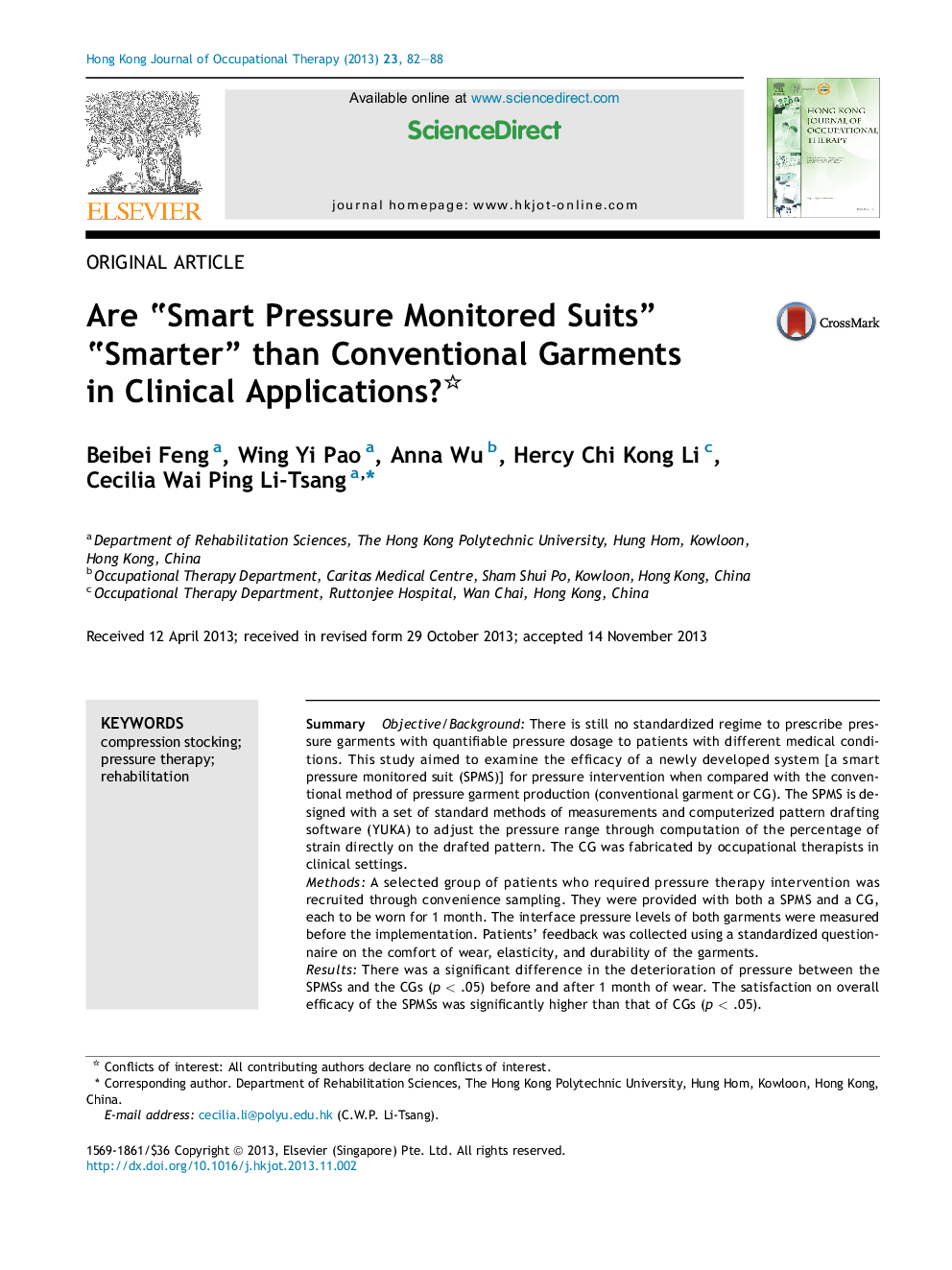| Article ID | Journal | Published Year | Pages | File Type |
|---|---|---|---|---|
| 2697390 | Hong Kong Journal of Occupational Therapy | 2013 | 7 Pages |
SummaryObjective/BackgroundThere is still no standardized regime to prescribe pressure garments with quantifiable pressure dosage to patients with different medical conditions. This study aimed to examine the efficacy of a newly developed system [a smart pressure monitored suit (SPMS)] for pressure intervention when compared with the conventional method of pressure garment production (conventional garment or CG). The SPMS is designed with a set of standard methods of measurements and computerized pattern drafting software (YUKA) to adjust the pressure range through computation of the percentage of strain directly on the drafted pattern. The CG was fabricated by occupational therapists in clinical settings.MethodsA selected group of patients who required pressure therapy intervention was recruited through convenience sampling. They were provided with both a SPMS and a CG, each to be worn for 1 month. The interface pressure levels of both garments were measured before the implementation. Patients' feedback was collected using a standardized questionnaire on the comfort of wear, elasticity, and durability of the garments.ResultsThere was a significant difference in the deterioration of pressure between the SPMSs and the CGs (p < .05) before and after 1 month of wear. The satisfaction on overall efficacy of the SPMSs was significantly higher than that of CGs (p < .05).ConclusionThis standardized system using a SPMS appeared to provide a more accurate and consistent pressure range and long-lasting effect to the patients. It also appeared to be more efficient and effective in terms of production and fabrication.
